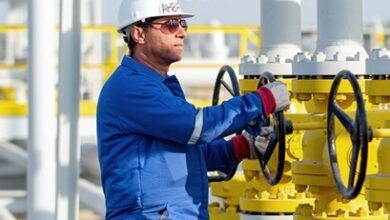Galp Energia: Industry must work together to bring about sustainable business models

By Alex Endress, Editorial Coordinator
For the drilling industry to come out of the market downturn with sustainable cost reductions, cooperation between operators and the service sector will be key. “It is now, in these times, that we have to be closer to each other,” Galp Energia CEO Carlos Gomes da Silva said during a keynote speech at the 2016 IADC World Drilling Conference in Lisbon on 15 June. Galp Energia has a market cap of approximately €10 billion ($11.2 billion) and operations in 14 countries, with 11 sanctioned projects currently producing or under development, seven discoveries and 34 exploration licenses. More importantly, its projects are currently able to break even at just $30/bbl, according to Mr Gomes da Silva. This low break-even will allow the company to grow its production by 25-30% from 2015 to 2020 despite the lower oil prices, he said. “In order for the industry to continue to be healthy and capable, to be sustainable and to drive value into the next decade, it is important that we cooperate closely with each other.”
Mr Gomes da Silva urged companies to partner together and develop business models with long-term perspectives. “The upstream and service companies have to become structurally more efficient, not just in the short term,” he said. “Efficiency programs, cost-cutting technology, investment sharing across the value chain and partnering with the operators are some of the key issues for the service companies.”
He urged oilfield service companies to implement more standardized solutions that will drive efficiency gains with simplified processes and shorter project delivery cycles. “Joint ventures between operators and contractors seems to be one of the key alternatives to minimize costs across the development chain,” he said. “Operators and service companies need to help each other and have to work together to find sustainable solutions in a challenging economic environment.”
To bring about sustainable solutions, he said, companies need to understand each other’s problems. “Sometimes we are not close with each other, and we are not able to understand the other side,” Mr Gomes da Silva said. “The operators, who are also suffering, came from a position where a number of the sanctioned projects are no longer sustainable to keep.”
For Galp, strong partnerships are critical to success. He cited the Area 4 discovery in Mozambique as a key project for the coming decade. It’s operated by Eni, with partners Galp, Korea Gas Corp Mozambique, National Oil Company Empresa Nacional de Hidrocarbonetos and China National Oil & Gas Exploration & Development. “It’s a greenfield project in the north of Mozambique, and we are working hard in order to make it fly in the next decade.” There is estimated to be a total of approximately 85 trillion cu ft of gas initially in place place at Area 4, according to Galp.
Mr Gomes da Silva also said the E&P industry must consider changing operating models in order to make more projects economical. “Both IOCs and NOCs need to rethink their business case proposition to secure long-term growth in an environment where the dividend capacity is challenged and cash flows and balances sheets are at risk.”
There are key levers that operators can pull in the current environment, including capital efficiency improvements and new business models between operators and contractors. “Cost pressure is forcing efficiency across the value chain, including simplifying processes and requirements, and leaner, shorter project delivery cycles,” Mr Gomes da Silva said. “We have to convene a completely different approach to balance what is the conventional and unconventional type of model, to separate and to manage each type for project specifics.” He also said companies need to balance their upstream and downstream portfolios. “Major IOCs continue to have a large exposure to downstream assets, which contributes to some resilience under the lower-for-longer crude prices environment. Low oil prices and climate change concerns will both play a role in portfolio management, namely towards the increase in natural gas assets.”
From a service industry standpoint, “the oilfield services and equipment segment is likely to see significant restricting in activity as companies enter financial distress, driving consolidation and deeper integration of services and equipment,” he said. “Continued consolidation across major oilfield services and equipment improves market position and allows us to capture sales and cost synergies.”
Regardless of what strategy used to reduce costs sustainably, Mr Gomes da Silva said he believes the drilling industry will be able to accomplish the necessary cooperation to remain cost sustainable in future years. “We are confident that following this challenging period, the industry will emerge more resilient and more innovative than ever before, and cooperation I think is the key word.”




